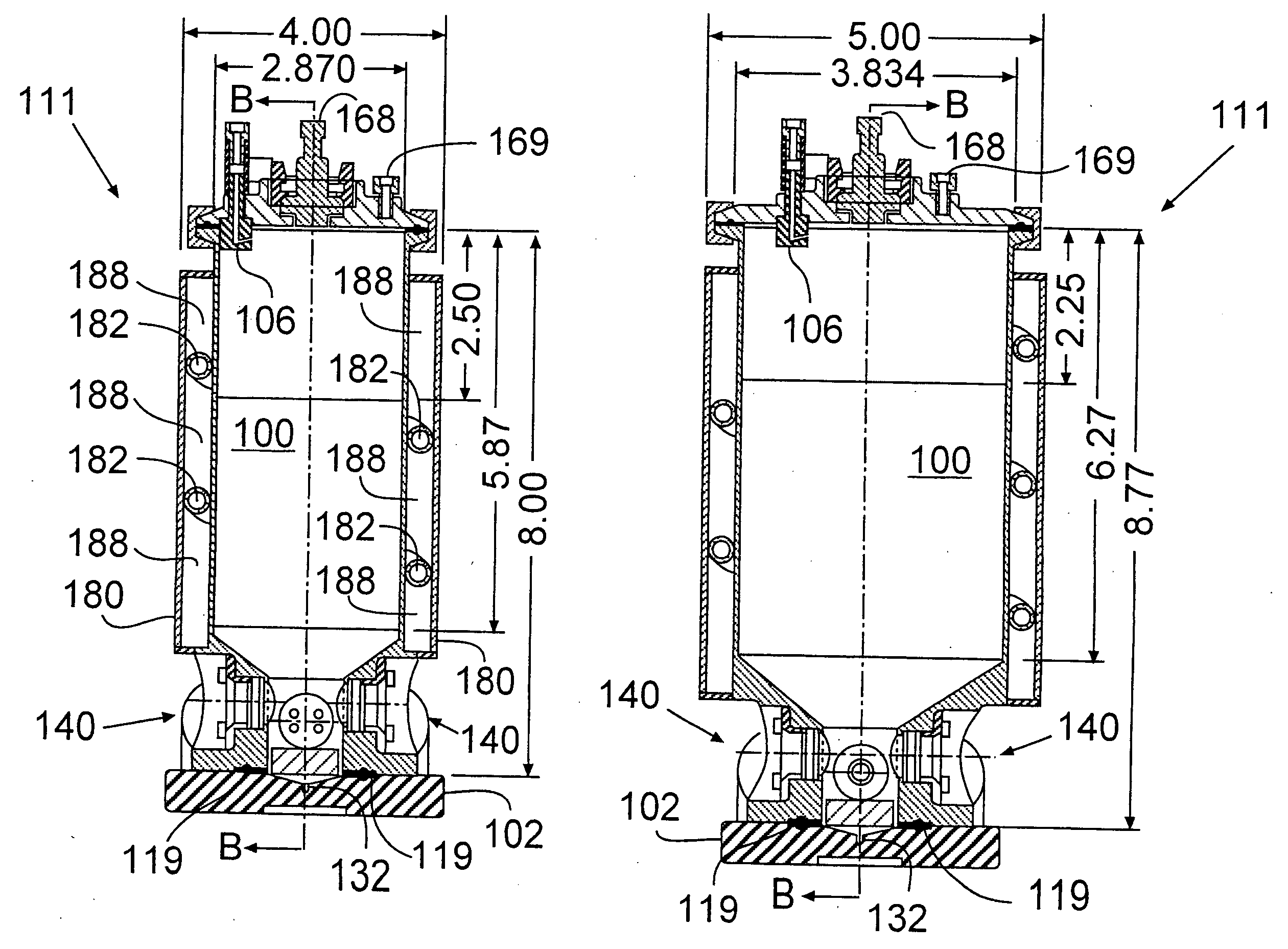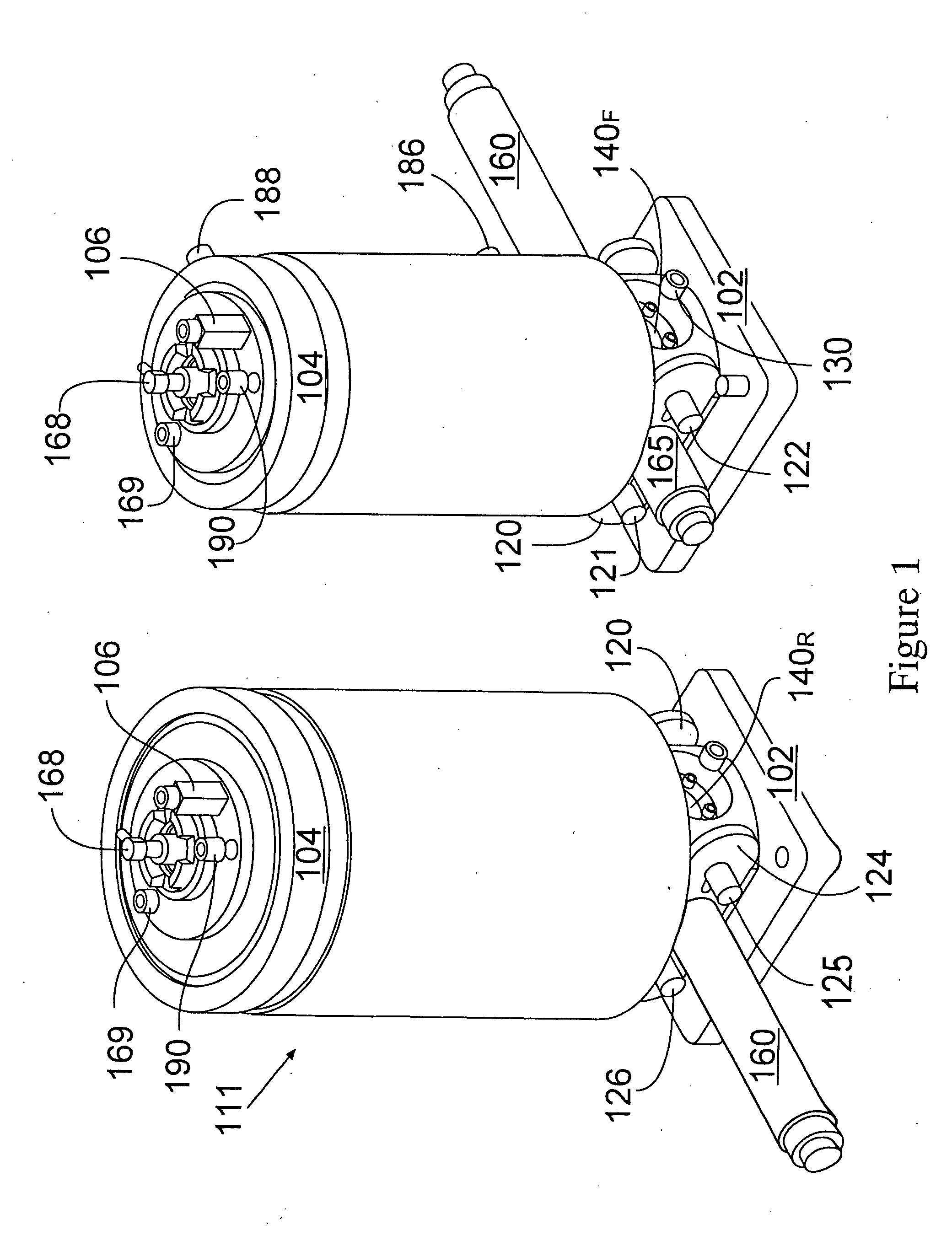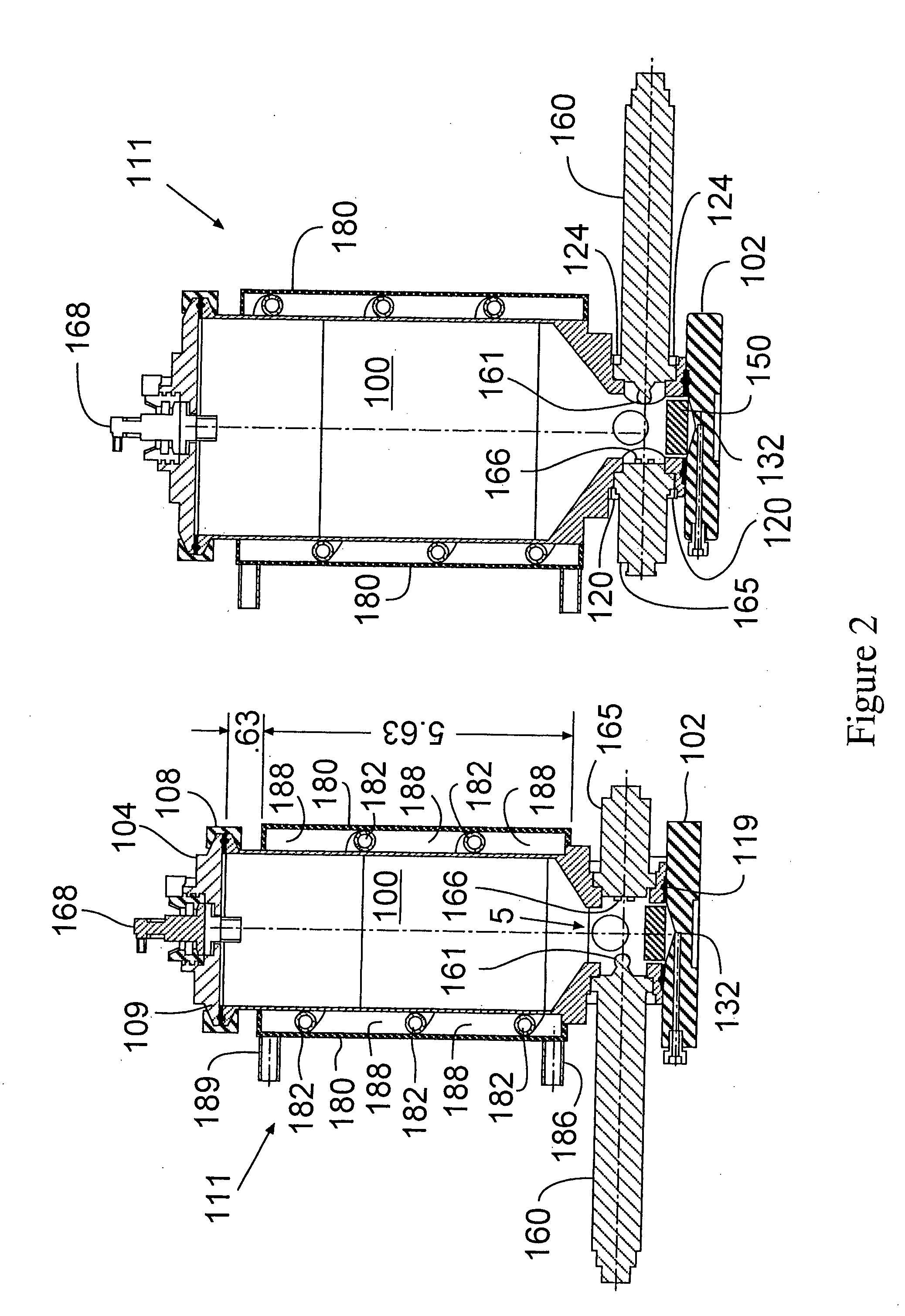Automated low-volume tangential flow filtration process development device
a technology of tangential flow filtration and development device, which is applied in the direction of dialysis system, wave based measurement system, centrifugal force sediment separation, etc., can solve the problems of consuming considerable time and effort, tff process development methods require tedious and/or frustrating methods, and achieve fast, economical, repeatable results
- Summary
- Abstract
- Description
- Claims
- Application Information
AI Technical Summary
Benefits of technology
Problems solved by technology
Method used
Image
Examples
example 1
An automated TFF process development device, electronically configured with the electronic data processing network described hereinabove, is structurally configured as set forth in FIG. 7 and the following Table:
ParameterValueMembrane Area50 cm2Minimum<20 ml / PXL 50Recirculation VolumeConcentration Ratio<1 liter / m2Starting Volume200 ml to 1 LFeed Pressure6 Bar (86 psi)Feed Flow RateUp to 100 ml / minProcess Temperature4-55° C.pH1-14Tanks1000 mL RecycleDevice HolderPXL StandardPumps:Feed (range)0-100 ml / min at 80 psiFiltrate (range)0-50 ml / min at 10 psiCoflow (range)0-100 ml / min at 80 psiTransfer (range)0-100 ml / min at 10 psiValvesOn / OffRetentate Back Pressure8 Port SelectorPressure IndicatorsFeedRange: 0-6 bar (90 psi) Accuracy: + / − 0.5% FSRetentateRange: 0-6 bar (90 psi) Accuracy: + / − 0.5% FSFiltrate 1Range: 0-6 bar (90 psi) Accuracy: + / − 0.5% FSFiltrate 2Range: 0-6 bar (90 psi) Accuracy: + / − 0.5% FSFlow IndicatorsFeed w / TotalizerRange: 0-100 ml / min Accuracy: + / − 1% FSFil...
PUM
| Property | Measurement | Unit |
|---|---|---|
| Volume | aaaaa | aaaaa |
| Length | aaaaa | aaaaa |
| Pressure | aaaaa | aaaaa |
Abstract
Description
Claims
Application Information
 Login to View More
Login to View More - R&D
- Intellectual Property
- Life Sciences
- Materials
- Tech Scout
- Unparalleled Data Quality
- Higher Quality Content
- 60% Fewer Hallucinations
Browse by: Latest US Patents, China's latest patents, Technical Efficacy Thesaurus, Application Domain, Technology Topic, Popular Technical Reports.
© 2025 PatSnap. All rights reserved.Legal|Privacy policy|Modern Slavery Act Transparency Statement|Sitemap|About US| Contact US: help@patsnap.com



